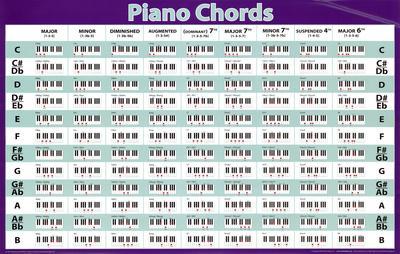
I’ll just give you one example here, so you can see how it works. Build Chords Using The Circle Of Fourthsīuilding chords is easier using the major scale compared to the circle of fourths, but again, it’s a possibility. There are other ways to read scales off the diagram too. If we reorder them, starting with the tonal center (F) and follow alphabetical order (keeping in mind that the musical alphabet only goes to G), we get F, G, A, Bb, C, D, E. These are the exact notes in the F major scale, just out of order. So, you should have gotten the notes Bb, F, C, G, D, A and E. I you’d like to know what notes are in the F major scale, for instance, all you would do is start one space to the right of F, which is Bb, and count to seven in a counterclockwise direction.

I tend to think this is less practical, but it’s certainly possible. This is the most practical and straightforward use of the circle of fourths, and it’s how most people use it, but we can always go deeper. In addition, you can identify sharp and flat keys, as well as enharmonic keys (key signatures that go by two names instead of one). Most circle of fourths diagrams show the relative minor keys too. The diagram shows all key signatures and how many sharps and flats are in each.

Here are a few things you can do with the circle of fifths, which is also connected to its benefits: Identify Key Signatures The only exception might be that you’re going to be thinking more in terms of flats than sharps because of how the pattern works. Using the circle of fourths is no different than using the circle of fifths.
#All music keys in order how to
How To Use The Circle Of Fourths And The Benefit In essence, we are talking about the same diagram, only coming at it from a different direction. They are both equally useful, assuming you understand the pattern. One is not more useful and the other less. You can get around the entire circle by moving in fourths.Ĭurious that if you take the circle of fifths in the opposite direction that it becomes the circle of fourths. The relationship between C and F is a fourth. When people talk about the circle of fourths, this is exactly what they’re talking about. So, there is a pattern, even when you go in the opposite direction – just a different kind of pattern. Then, when you go from F to Bb, you get two flats. Well, if you started at C and moved one space to the left to F, you’d see that the number of flats increases by one. With the circle of fifths, if you move in a clockwise direction, with each passing key, the number of sharps continues to increase until it transitions into flats and the number of flats goes down as you continue around the circle.Įventually, you can work your way around the entire wheel, coming back to the point you started at.īut what if you moved in a counterclockwise direction around that circle? Would that break the concept? But if that’s the case, why differentiate? The circle of fourths is in fact just the circle of fifths. Circle Of Fourths And Fifths Compared – What Is The Difference? The basics of music theory can be explained relatively easily using the circle of fourths, making it a valuable practice to commit to memory. It also shows which key signatures are closely related, meaning they are easy to transition in and out of if necessary. In other words, you can use it to learn which notes to turn into sharps or flats for any key. The circle of fourths is a diagram showing you how many sharps or flats there are in each key. Of course, there are songs that cycle through different keys, and there is also atonal music, which may have been written for a specific key, but it’s so all over the place that you can’t tell what key it’s supposed to be in. Since music is always played in one of the 12 keys, it’s important that you understand how each key differs. If you used all 12 notes to construct a scale, you would merely have what’s called a chromatic scale, which is sometimes used in music, but isn’t in any key signature specifically. These diatonic scales are connected to the chords that belong in each of these keys too.

These 12 keys each contain seven notes in the form of a diatonic scale. There are 12 notes in music and therefore 12 key signatures, each with a varying number of sharps and flats. The circle of fourths is the clock of music, showing the relationship between the 12 key signatures. Circle Of 4ths Complete Guide ConclusionĬircle Of Fourths Explained – What Is It? Definition Revealed.Build Chords Using The Circle Of Fourths.How To Use The Circle Of Fourths And The Benefit.Circle Of Fourths And Fifths Compared – What Is The Difference?.



 0 kommentar(er)
0 kommentar(er)
